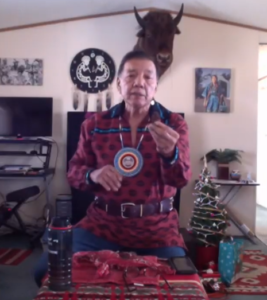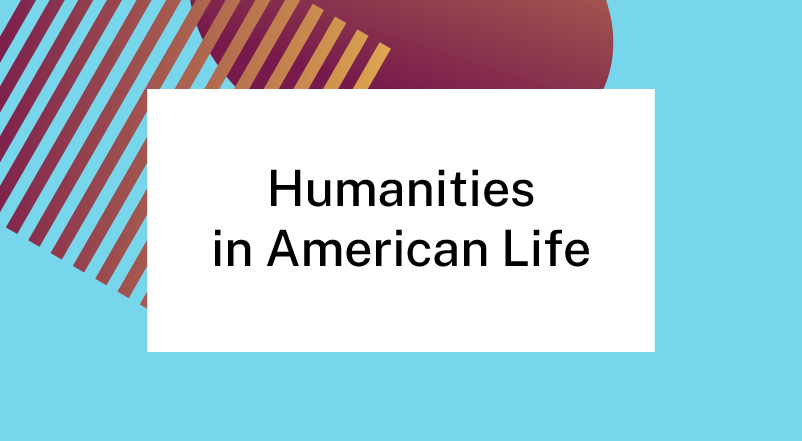Water Storytelling with Utah Humanities
by Sydney Boyd, project manager, Humanities in American Life
 “We have our own way of looking at things,” Larry Cesspooch, Ute elder and storyteller, said in opening to a Think Water Utah conversation about water’s central role in the circle of life. “Story time is what we do in the winter months because there’s nothing else to do. You can imagine back in the old days when you came home and you finished eating and there was nothing to do and you didn’t have the big screen TV…so you would invite a storyteller to come in,” Cesspooch said. “It’s story time now.”
“We have our own way of looking at things,” Larry Cesspooch, Ute elder and storyteller, said in opening to a Think Water Utah conversation about water’s central role in the circle of life. “Story time is what we do in the winter months because there’s nothing else to do. You can imagine back in the old days when you came home and you finished eating and there was nothing to do and you didn’t have the big screen TV…so you would invite a storyteller to come in,” Cesspooch said. “It’s story time now.”
“Live Storytelling with Larry Cesspooch,” recorded on December 22, 2020 and presented in partnership with Swaner Preserve & EcoCenter, is part of the Water/Ways Smithsonian exhibition tour running through 2021. Presented by Utah Humanities and its partners, Think Water Utah includes local exhibitions and events happening statewide as well as digital resources that focus on the essential role water plays in Utah communities.
Cesspooch began with a story about Sinawav, the Creator, who takes earth and water and mixes them together to create life. As Cesspooch told the story, he unfolded a handkerchief of soil. He took a handful of it in one hand and poured water over it with the other, forming a shape that he held up for the virtual community watching to see.
“Everything Creator makes has a purpose in its life, so this is all the trees, all the animals, all us human beings, all things that need water to survive and breath to live. Everything has a purpose,” Cesspooch explained. “That’s why Native Peoples say all our relations…just because we can step on an ant, just because we can chop down a tree, doesn’t mean we’re supreme. If we do everything together it will all work out.”
All living beings participate in a circle of life, Cesspooch said, and water is part of that cycle, receiving water like the first sunrise.
“Many of our people, we go out to that sunrise, we thank Creator for this new day, for this water…this life,” Cesspooch said.
Cesspooch described how the Ute use water in sweat ceremonies, which are held in lodges built like a little igloo with a frame made of Red willow that Cesspooch called “ribs,” where water opens pathways across the circle of life.
“You enter the womb of Mother Earth when you go into this lodge, and the person that enters changes through what’s sort of like, when we’re young, we can still see spirits and we believe in everything,” Cesspooch said. “We’re told ‘oh, there’s no Santa Clause, and there’s no Easter bunny,’ and we start shutting off all of these things. But when you go into the lodge, you start opening up these passageways back up again, and you start to hear things and realize that your life is changing—all of those things are opening back up where you can feel things, it will help you through anything.”
In a pit at the center of the lodge lie red hot lava rocks—36 rocks in the winter, Cesspooch said—that create great clouds of steam when water is poured over them.
“When we pour water on it, the steam becomes the breath of the Creator, and so it’s that breath, that steam, that cleanses your mind, your body, and your spirit,” Cesspooch said. “And when we sing in unison with each other, that’s the way the Creator intended…we’re all singing the same, and the drum beats are the same, and when everything is right, you’ll start seeing spirits, like little fireflies.”
Ute stories about water extend from ceremonies to the waterways themselves. Cesspooch explained that waterways were not a main means of travel or existence for the Ute, and a story goes along with that.
“We have stories about water babies that are in the water, born in the water…but it would hypnotize you and coax you into that water and take you, so when you hear babies down by the river you don’t want to go down there” Cesspooch said. “I think that thing is somewhat also a reason why we didn’t make boats or make water a leisure type of recreation. I think it’s more along the lines of ‘respect water,’ it’s not there to play in, it’s life—it’s just another way of looking at it.”
This post is part of “Humanities in American Life,” an initiative to increase awareness of the importance and use of the humanities in everyday American life.
Photo credit: Utah Humanities and Swaner Preserve & EcoCenter



